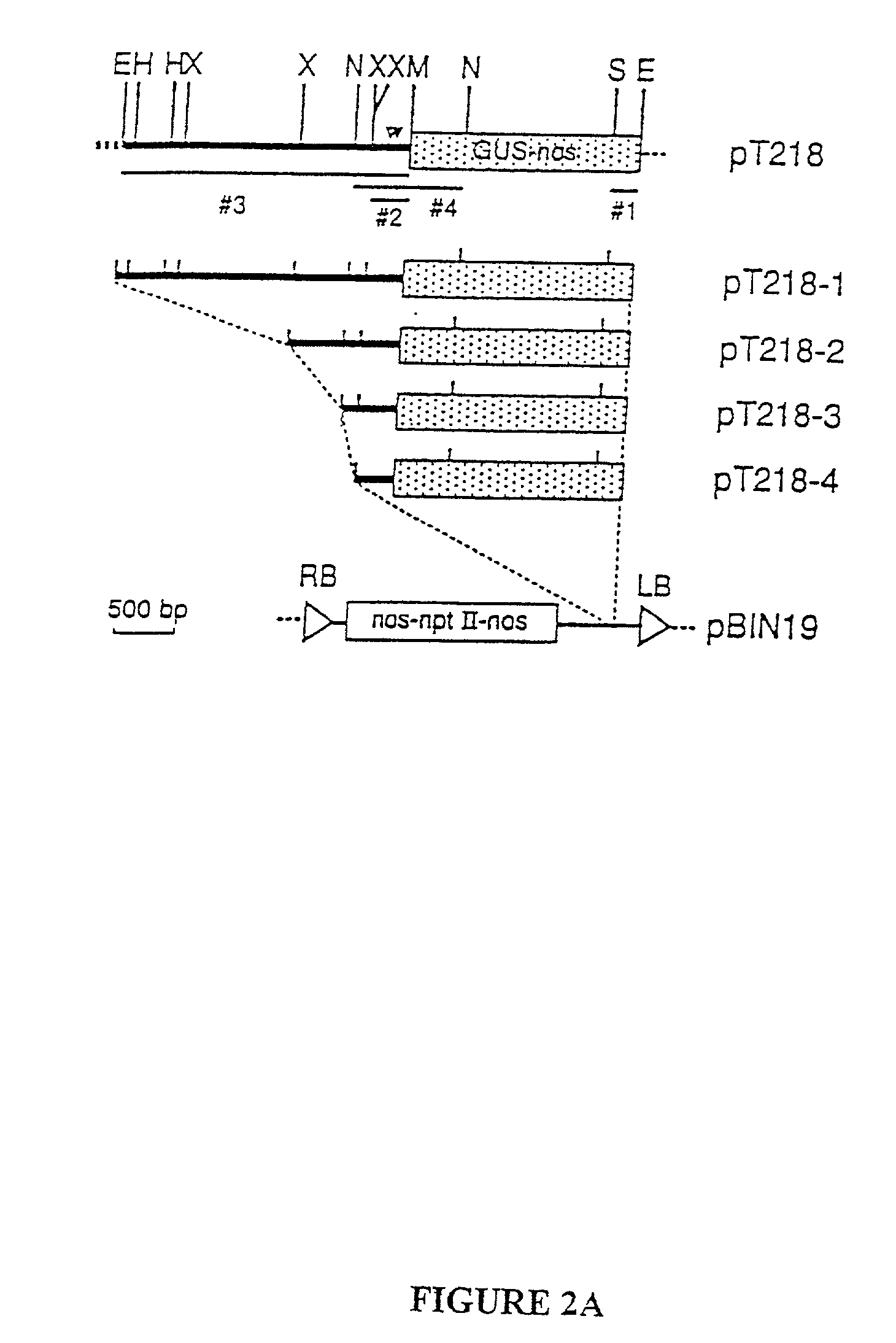Cryptic regulatory elements obtained from plants
a technology plants, applied in the field of cryptic regulatory elements obtained from plants, can solve problems such as complete loss of gus activity, and achieve the effects of reducing the relative biomass of seed coats, facilitating dehulling of seeds, and increasing seed siz
- Summary
- Abstract
- Description
- Claims
- Application Information
AI Technical Summary
Benefits of technology
Problems solved by technology
Method used
Image
Examples
Embodiment Construction
[0146] Transfer of binary constructs to Agrobacterium and leaf disc transformation of Nicotiana tabacum SR1 were performed as described by Fobert et al. (1991, Plant Mol. Biol. 17, 837-851). Plant tissue was maintained on 100 .mu.g / ml kanamycin sulfate (Sigma) throughout in vitro culture.
[0147] Nine-hundred and forty transgenic plants were produced. Several hundred independent transformants were screened for GUS activity in developing seeds using the fluorogenic assay. One of these, T218, was chosen for detailed study because of its unique pattern of GUS expression. Furthermore, following the screening of transformants in a range of plant organs, T1275 was selected which exhibited high level, constitutive expression of GUS.
[0148] Characterization of a Seed Coat-specific GUS Fusion--T218
[0149] Fluorogenic and histological GUS assays were performed according to Jefferson (Plant Mol. Biol. Rep. , 1987, 5, 387-405), as modified by Fobert et al. (Plant Mol. Biol., 1991, 17, 837-851). For...
PUM
| Property | Measurement | Unit |
|---|---|---|
| pH | aaaaa | aaaaa |
| pH | aaaaa | aaaaa |
| temperature | aaaaa | aaaaa |
Abstract
Description
Claims
Application Information
 Login to View More
Login to View More - R&D
- Intellectual Property
- Life Sciences
- Materials
- Tech Scout
- Unparalleled Data Quality
- Higher Quality Content
- 60% Fewer Hallucinations
Browse by: Latest US Patents, China's latest patents, Technical Efficacy Thesaurus, Application Domain, Technology Topic, Popular Technical Reports.
© 2025 PatSnap. All rights reserved.Legal|Privacy policy|Modern Slavery Act Transparency Statement|Sitemap|About US| Contact US: help@patsnap.com



